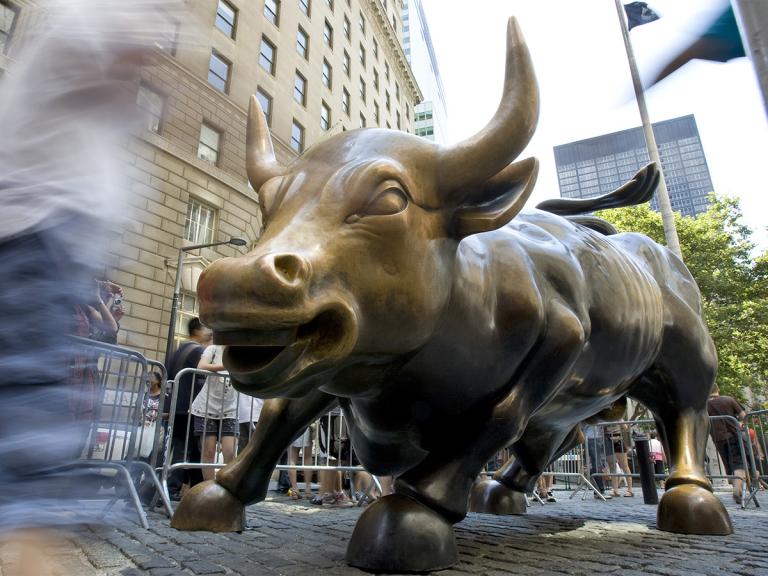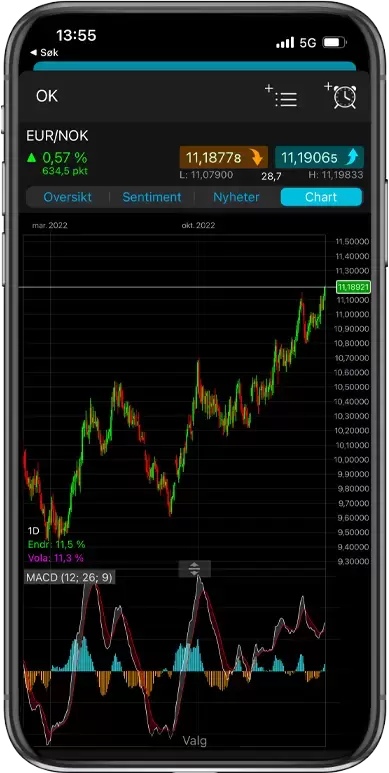This week’s first notable diaried economic announcements come on Wednesday, when the UK announces its May GDP and the US releases June inflation numbers. On Friday, China reports its Q2 GDP, plus retail sales for June.
Meanwhile, US banks are set to kick off a fresh earnings season. JPMorgan – the largest American bank by assets – announces its Q2 results on Thursday, as does Morgan Stanley. Citigroup follows them on Friday.
OUR TOP THREE EVENTS FOR 11-15 JULY:
Wednesday – UK GDP (May)
The UK economy unexpectedly contracted by 0.3% in April, adding to concerns of an economic slowdown. Though disappointing, the fall was driven by a reduction in the Covid test-and-trace and vaccination programmes – without that impact, GDP would have expanded by 0.1%, according to the Office for National Statistics.
The May reading could deliver a modest improvement compared to April, but the growth outlook remains a worry. Fuel prices are set to rise even higher, which could lead to demand destruction – a permanent downward shift in demand – as consumers make cutbacks.
Wednesday – US CPI, PPI (June)
Ordinarily, the US consumer price index (CPI) tends not to radically alter Federal Reserve policy, since the central bank’s preferred inflation measure is the core personal consumption expenditures (PCE) price index. However, these are not ordinary times. CPI rose 8.6% in the year to May, up from 8.3% in April, prompting a sudden shift in Fed policymakers’ thinking ahead of their 14-15 June meeting.
Before that meeting, the Fed had guided markets to expect that it would raise interest rates by 50 basis points. But at the meeting, officials decided to raise rates by 75 basis points to a range of 1.5-1.75%. The suggestion that people with knowledge of the bigger-than-expected rate hike allegedly briefed friendly journalists during a media “blackout” period prior to the meeting was hugely controversial. It could also undermine the Fed’s guidance in the future.
It’s still unclear whether the surprise jump in CPI in May was a blip, given that other measures appear to show that inflationary pressures are easing. For instance, the producer price index (PPI) has slowed from 9.6% in March to 8.3% in May. With several Fed policymakers calling for another 75-basis-point increase this month, could their case be weakened if CPI decelerated in June? Might that make a 50-basis-point hike more likely? Time will tell.
Consensus estimates suggest that CPI may have risen to a fresh 40-year peak of 8.8% in June. But this rather flies in the face of PPI, PCE and prices paid data, which have been trending lower. Longer term, an easing in CPI and PPI could temper the Fed’s aggressive stance on rate rises over the course of the next six months.
Thursday – JPMorgan Chase Q2 results
US banks aren’t the worst performers on the S&P 500 this year, but despite rising interest rates the sector still fell around 25% in the first half of 2022. Signs that the rising cost of living is prompting consumers to cut back on spending are raising concerns about a possible recession. Falling house prices have also weighed on sentiment.
For Q1, JPMorgan Chase reported adjusted revenue of $31.59bn. Profits came in at $8.3bn, or $2.63 a share, narrowly missing expectations. A notable takeaway was that revenue at the investment banking division fell 28% to $2.1bn because of lower fees. In better news for the company, revenue from equities trading and fixed income beat expectations, coming in at $3.1bn and $5.7bn, respectively.
CEO Jamie Dimon tried to paint a positive picture of the results. He said that, on the retail side, the bank was seeing positive trends, with deposits up 9%, credit and debit card spending up 21%, and card loan balances up 11%. However, mortgage lending unsurprisingly fell 37%, mainly due to the higher interest rate environment. With rates only likely to rise in the coming months, the bank announced at the end of June that it will lay off or reassign over 1,000 employees in its mortgage unit.
Another concern for investors was that the bank set aside $1.5bn in loan-loss provisions due to inflation risks. As inflation has risen since Q1, the bank may set aside further sums. With inflation also adding to staff retention costs, operating expenses are likely to be a major theme going forward Profits for Q2 are expected to come in at $2.89 a share.
MORE KEY EVENTS (11-15 JULY):
Monday 11 July
No major announcements
Tuesday 12 July
No major announcements
Wednesday 13 July
UK GDP (May)
See top three events, above
US CPI, PPI (June)
See top three events, above
Bank of Canada interest rate decision
Last month the Bank of Canada raised interest rates by 50 basis points to 1.5%, in line with expectations, and signalled that further – and perhaps more aggressive – hikes are on the way to combat rising inflation.
Canada’s consumer price index rose 7.7% in the year to May, up from 6.8% in April. Aware of the risks of elevated CPI, the Bank of Canada is likely to raise rates by at least 50 basis points this month, and possibly by 75 basis points as it seeks to stay ahead of the Federal Reserve.
JD Wetherspoon Q4 results
There’s been little in the way of cheer for the hospitality sector over the past two years, with Wetherspoon’s CEO Tim Martin particularly scathing of the government’s support measures during the pandemic. Last year the pub chain posted a record loss of £154.7m as full-year revenues fell to £772.6m. At the time, the mindset was that things couldn’t get any worse, but the shares have remained under pressure, falling by more than 30% since October.
Although trading has improved this year, the sector still faces challenges. The sharp rise in tax rates in April and the rising cost of living have already had an impact. In an update in May, bosses revealed that like-for-like sales were down 4% for the 13 weeks to 24 April. However, over the last two weeks of that reporting period, which covered Easter, like-for-like sales were positive.
Platinum Jubilee celebrations in early June are likely to have provided a boost, helping to lift revenues in what has been another challenging year. As far as the outlook is concerned, Martin said he expected to see a break-even outcome for profits in the current financial year, and that 2023 would see a return to relative normality.
Thursday 14 July
JPMorgan Chase Q2 results
See top three events, above
Morgan Stanley Q2 results
Although it hit a record high in February, Morgan Stanley’s share price is down by more than a quarter year to date. The stock currently sits at a 15-month low as the US banking sector suffers amid recession worries.
In Q1 revenue came in at $14.8bn, while profits were $2.2bn or $2.06 a share, as equity net revenues increased 10% year-on-year to $3.2bn. Fixed income, currency and commodities trading was flat at $2.9bn, but beat expectations for $2.1bn.
Wealth management revenue of $5.9bn missed estimates for $6.2bn, but surpassed the Q4 figure of just under $5bn. Wealth management could see further underperformance in the coming quarters if stock market weakness continues. Profits for Q2 are expected to come in at $1.76 a share.
Friday 15 July
China Q2 GDP
China’s Q2 GDP numbers are unlikely to tell a positive story. Moreover, with retail sales and industrial production negatively affected by Covid lockdowns across the country, it’s going to be a tall order for the Chinese economy to get anywhere near its GDP growth target of 5.5%.
In Q1 the economy was said to have expanded 4.8%, which seems generous. But retail sales plunged in April and May, and are likely to have remained weak in June, while industrial production was also disappointing, as lockdowns forced the suspension of activity at Chinese ports and businesses. One astonishing statistic showed that not a single car was sold in Shanghai in April. Against such a backdrop it’s hard to see how China’s economy could have seen any significant expansion in Q2.
China retail sales (June)
It’s set to be a disappointing quarter for Chinese retail sales. Having declined by 11.1% and 6.7% in April and May, respectively, it’s likely that retail sales contracted in Q2, even though June may have provided a post-lockdown bounce as consumers returned to shops. That said, if retail sales activity declined in June, it would constitute the worst run for the sector since the first lockdown at the beginning of 2020.
Industrial production appears to be showing signs of life, having rebounded by 0.7% in May after declining by 2.9% in April. Nonetheless, economic activity is likely to remain subdued while Chinese authorities continue to impose lockdowns at the merest hint of a Covid outbreak.
US retail sales (June)
After four successive months of growth at the start of this year, retail sales contracted by 0.3% in May. Given the rising cost of living, it should perhaps come as little surprise that US consumers are cutting back on their spending. It was arguably only a matter of time before weak consumer confidence, which has been falling for months, showed up in the numbers. June retail sales growth is expected to come in at 0.9%, which seems optimistic as consumer confidence is sinking and prices go on rising.
Citigroup Q2 results
Despite a decent beat on its Q1 numbers, Citigroup’s share price has fallen 25% year-to-date, in line with declines across the sector, as the potential for an economic slowdown prompts concerns over a drop-off in business and mortgage lending.
Q1 revenue came in at $19.2bn, while profits were $2.02 a share – both above expectations. Income from FICC fell 1% year-on-year to $4.3bn, but beat expectations for $3.98bn. As at other US banks, equity and trading revenue helped drive the overall revenue beat, coming in at $1.53bn. Expenses were higher than expected, rising 15% to $13.17bn, as the bank undergoes a restructuring process.
Citigroup has also reduced its Russia exposure from $9.8bn to $7.8bn. The bank has set aside $1.9bn to cover potential losses, with a worst-case scenario now seen to be in the region of $2.5bn to $3bn. Profits for Q2 are expected to come in at $1.67 a share.
Index dividend schedule
Dividend payments from an index's constituent shares can affect your trading account. View this week's index dividend schedule.
Selected company results
| MONDAY 11 JULY | RESULTS |
| AZZ (US) | Q1 |
| E2open Parent Holdings (US) | Q1 |
| PriceSmart (US) | Q3 |
| TUESDAY 12 JULY | RESULTS |
| PepsiCo (US) | Q2 |
| Purplebricks (UK) | Full-year |
| WEDNESDAY 13 JULY | RESULTS |
| Fastenal (US) | Q2 |
| Ilika (UK) | Full-year |
| J D Wetherspoon (UK) | Q4 |
| Loungers (UK) | Full-year |
| Ocean Power Technologies (US) | Q4 |
| Renold (UK) | Full-year |
| THURSDAY 14 JULY | RESULTS |
| American Outdoor Brands (US) | Full-year |
| Cintas (US) | Q4 |
| Conagra Brands (US) | Q4 |
| First Republic Bank (US) | Q2 |
| JPMorgan Chase & Co. (US) | Q2 |
| Morgan Stanley (US) | Q2 |
| FRIDAY 15 JULY | RESULTS |
| Bank of New York Mellon (US) | Q2 |
| BlackRock (US) | Q2 |
| Citigroup (US) | Q2 |
| PNC Financial Services (US) | Q2 |
| Progressive Insurance (US) | Q2 |
| State Street (US) | Q2 |
| UnitedHealth (US) | Q2 |
| US Bancorp (US) | Q2 |
Company announcements are subject to change. All the events listed above were correct at the time of writing.
CMC Markets er en ‘execution-only service’ leverandør. Dette materialet (uansett om det uttaler seg om meninger eller ikke) er kun til generell informasjon, og tar ikke hensyn til dine personlige forhold eller mål. Ingenting i dette materialet er (eller bør anses å være) økonomiske, investeringer eller andre råd som avhengighet bør plasseres på. Ingen mening gitt i materialet utgjør en anbefaling fra CMC Markets eller forfatteren om at en bestemt investering, sikkerhet, transaksjon eller investeringsstrategi. Denne informasjonen er ikke utarbeidet i samsvar med regelverket for investeringsanalyser. Selv om vi ikke uttrykkelig er forhindret fra å opptre før vi har gitt dette innholdet, prøver vi ikke å dra nytte av det før det blir formidlet.







